TLT: What is brake dust?
Vakili: Every time the foundation brake is used to decelerate a moving vehicle, brake dust (debris) is generated. This dust is the result of wear of the friction pair—the pads (or shoes) and rotor. Based on debris volatilities and specific gravity, some are airborne, others are deposited on the wheel or the road. On busy highways this dust is continually being thrown back into the atmosphere. Typically black wheels on vehicles are an indication of brake dust deposits and is now regarded as a quality issue.
TLT: What does brake dust consist of?
Vakili: The basic function of a foundation brake is to convert the kinetic energy of a moving vehicle into heat. This conversion is achieved by the interaction of the friction pair, the stationary pads (or shoes) and the moving rotor under load. The friction material is a complex mix of compounds, and the rotor is generally some form of iron. The interaction results in wear of both parts with the dust being a complex mix of both. Some of the dust sticks to the rotor and re-enters the friction interface to exacerbate the wear process, so more dust is generated.
TLT: Does brake dust have different chemical composition than the bulk friction material?
Vakili: Bulk friction material exists in two different stages:
a)
Mixed raw materials, often dry but at times wetted to pelletize
b)
Processed cured friction materials in a desired geometrical shape.
The chemical composition of the mix is oriented around the properties of each constituent leading to a desired performance of the whole body. For example, during the forming and processing stage, the commonly used phenolic resin is often in powder (solid) form, but once mixed and heated the resin goes from solid to liquid and back to solid during cooling. At the last stage the resin is charred and has lost nearly all of its original characteristics, both chemically and physically.
This variation in original characteristics occurs among nearly all raw materials as they go from raw stage to a “cooked” friction material. The processes that take place during a braking application, and the nature of the dust generated, depend on the severity of the braking application and the temperatures generated. The lower the temperature (i.e., <200 C) the more likely the dust is similar to that at the processing stage. However, for applications when braking demands are higher, such as downhill descents and high-speed stopping, the generated interface temperatures are much higher, and the nature of brake dust changes.
The changes, of course, depend on the makeup of the friction lining to begin with. Oxidation, decomposition and ablation are some of the many to mention.
TLT: How would you evaluate brake dust? Quantity? Any performance testing?
Vakili: Brake dust evaluation is under way by the friction material industry and academia globally in terms of particle mass (PM) and particle number (PN). There is, of course, commercial interest in the whole process whereby the methodology of testing itself is a good source of business revenue, both in terms of bench testing, such as dynamometer, or vehicle testing. Regardless, to this date the focus has been on the quantity of the brake dust rather than its evaluation.
The quantity of brake dust is simply determined empirically. You start with a known weight of a friction pair (brake pad and rotor) and end up with a weight less than the starting weight. The difference is weight lost during the testing procedure. This weight loss may be extrapolated over the life of the lining to determine one vehicle’s contribution to the brake dust on the road and, by extension, the vehicle population within a city, country or continent. As there are currently over a billion vehicles on the road globally, this leads to a significant amount of dust being continually generated.
So far no one has undertaken any significant performance testing to determine the contribution of brake dust to the environment. Brake debris is by nature a nuisance. Some research indicates it may be potentially hazardous to human health, depending on its makeup. There are, however, adverse characteristics attributed to brake debris that is supported by testing such as the effect of brake debris containing copper. This effect was seen most convincingly in research of the water in San Francisco Bay (SFB). The amount of copper was so high it resulted in deteriorating marine life and the breeding cycle of salmon. Once the copper content was reduced, the adverse effect on marine life was reduced.
 © Can Stock Photo / monticello
TLT: What are the preferred brake friction material formulation for dust control?
Vakili:
© Can Stock Photo / monticello
TLT: What are the preferred brake friction material formulation for dust control?
Vakili: All brake formulation will eventually be converted to brake debris regardless of the nature of formulation. However, the difference is that some formulations such as low steel (LS) wear off faster than all others and deposit dust not only on the roads but also onto the vehicle’s wheel. When these types of linings are used, car wheels will get even blacker due to dust accumulation.
Categorically speaking, the amount of dust (i.e., brake debris generated by a brake friction material) depends on its wear rate. The faster it wears, the more dust is generated. The lining wear is higher in LS, reducing with semi met (SM) and then non-asbestos organic (NAO) friction materials, respectively.
Rotors contribute to the dust generation in a proportional way. The higher the lining wear, the higher the surface of rotor wear (disc or drum). The dust generated at the point of braking is a mixture of both surfaces being ground and are currently inseparable, although magnets may be used to extract some of the ferrous particles. Drums and discs of inferior quality are usually made from low purity carbon with high contamination, hence they wear faster with greater amounts of brake dust being generated.
TLT: What is the environmental impact of brake dust?
Vakili: The environmental impact of brake dust depends on the quality of manufacture and the market at which the product is targeted, either the original equipment market or the aftermarket (AM). Typically, if the lining is made for an original equipment (OE) application, then the product must meet a given specification, and so the quality of the product is high. Conversely, if the product is for the AM, then the level of quality is not so rigidly enforced, which results in a wide variety of standards with the quality being a relatively unknown factor.
While no studies have confirmed a link between exposure to brake dust and these injuries, it has been alleged that some brake mechanics developed lung-related diseases, including asbestosis and mesothelioma, from working on brakes that had asbestos content. Other studies claim that the asbestos content of brakes is either encapsulated or its composition changes after it has ground into dust during the braking process and, therefore, the asbestos content in brakes does not become “friable” to cause lung injuries. Moreover, brakes using component substitutes for asbestos in their friction material, such as potassium octa titanate, are alleged to cause similar lung-related symptoms. To date, there are no regulations prohibiting the use of asbestos as a component of friction material in brake linings in the U.S.
Conversely, in the 1980s copper level in SFB became of concern. In 1990s the storm water running into SFB was found to have high concentration of copper. Testing confirmed that the presence of copper in the brake lining was a major contributor to the storm water impurity.
In 1995 a group consisting of the following organizations formed to address the issue:
•
Brake Manufacturers Council
•
California Storm Water Association
•
Sierra Club
•
Sustainable Conservation
•
Water Resources Management of California.
Before 1980 the use of copper in brake friction materials was unlimited. Due to its proven environmental impact on marine life, the industry agreed to taper off the use of copper. The current regulations call for a maximum amount of copper in a friction formulation to be no more than 5% by Jan. 1, 2021, reducing to 0.5% by 2025. Other regulations to comply with are: cadmium and its compound 0.01%; chromium VI 0.1%; lead and its compound 0.1%; mercury and its compound 0.1%; and asbestiform fibers 0.1%.
According to a study published in Lancet Medical Journal, people who live within 50 meters of major roads have 7% higher chance of developing dementia than their counterparts living 300 meters away from the road. The early onset of dementia is due to the pollutants from the traffic (i.e., brake debris). The study analyzed the record of 6.5 million people in Ontario, Canada, from 2001-2012 and found 243,611 cases of dementia (residence based on zip code). It is believed that the very fine dust particles enter the brain through blood stream.
TLT: What are the current regulations and legislative standards for controlling brake dust?
Vakili: Apart from the reduction of copper and five other ingredients mentioned earlier in friction formulations, there are no current regulations in existence worldwide. The friction material industry is rapidly looking into brake dust measurement, particle size distributions, reproducibility and in some cases their chemical makeup, all on a voluntary basis. No deadline to meet, no regulation to comply with. Within Europe there is some movement toward total vehicle emissions. This is the result of reducing tailpipe emissions, which now brings into focus non-tailpipe emissions from the tires, brakes and roads.
TLT: What are the potential solutions in the market to capture brake dust?
Vakili: Currently there are three viable brake debris collection systems available, all at development stages, none commercially utilized. These are Tallano, Mann+Hummel and Clean Brake Performance (CBP), described as follows:
1.
Tallano (France). This organization offers a collection system for both passenger cars and railways. Figures 1-3 below demonstrate the working process of Tallano’s module for road vehicles and Figure 4 for rail.
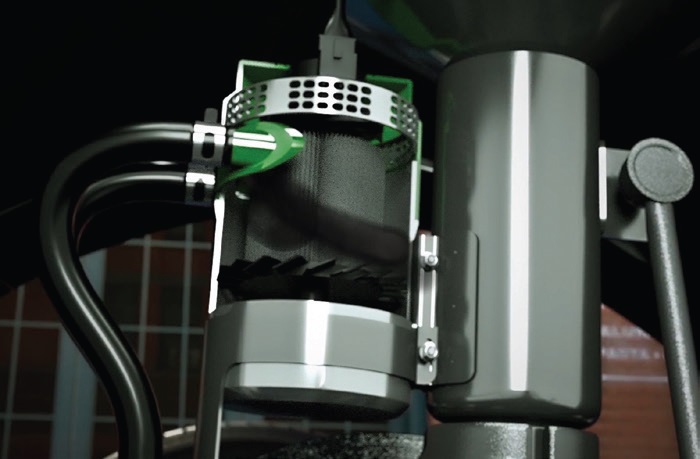 Figure 1. Tallano’s electric module. An electrically driven turbine is fitted to each wheel along with a filter unit. The suction pipe is connected to its respective caliper. See Figures 2 and 3. (Figure courtesy of Tallano.)
Figure 1. Tallano’s electric module. An electrically driven turbine is fitted to each wheel along with a filter unit. The suction pipe is connected to its respective caliper. See Figures 2 and 3. (Figure courtesy of Tallano.)
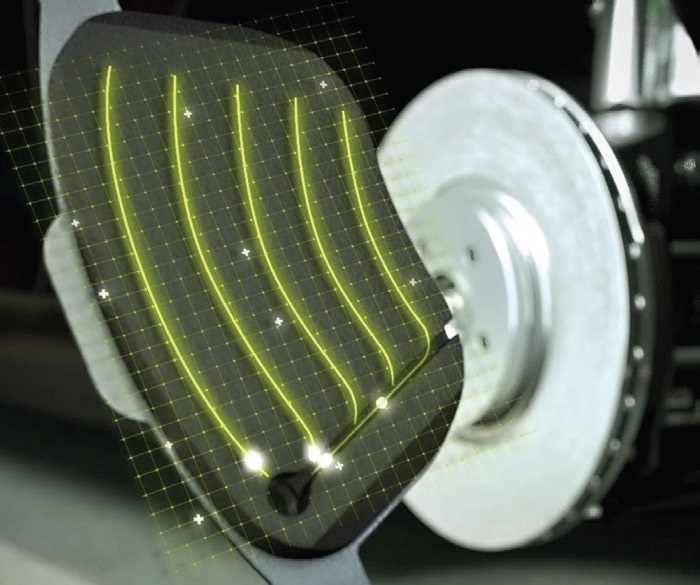 Figure 2. Grooves in the pads direct the dust toward a common outlet hole. (Figure courtesy of Tallano.)
Figure 2. Grooves in the pads direct the dust toward a common outlet hole. (Figure courtesy of Tallano.)
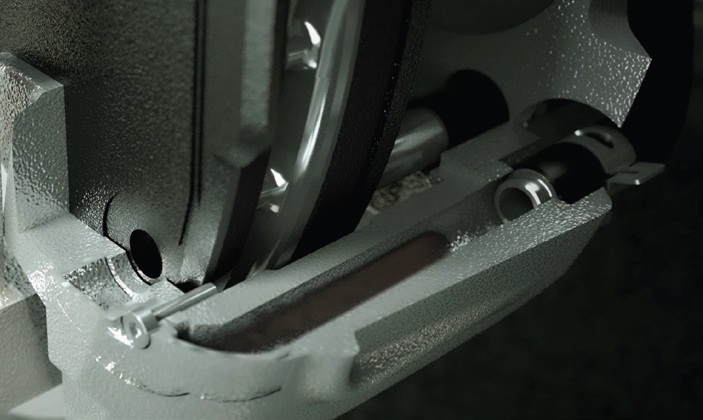 Figure 3. Ports in the caliper receive the dust from the pads and direct it to the turbine and filter unit. (Figure courtesy of Tallano.)
Figure 3. Ports in the caliper receive the dust from the pads and direct it to the turbine and filter unit. (Figure courtesy of Tallano.)
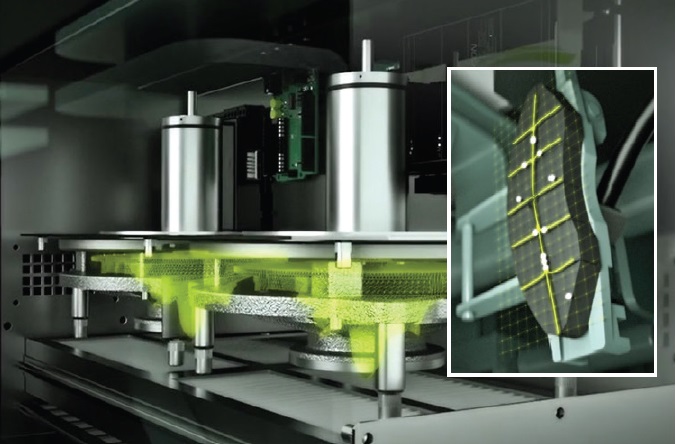 Figure 4. A common electrically powered turbine module and filtering system serves one train unit. The brake pads contain grooves that allow the dust to be directed to the common pump/filter module. (Figure courtesy of Tallano.)
Figure 4. A common electrically powered turbine module and filtering system serves one train unit. The brake pads contain grooves that allow the dust to be directed to the common pump/filter module. (Figure courtesy of Tallano.)
2.
Mann+Hummel System (Germany). Its focus is primarily on passenger cars and the European market. The module is shown in Figure 5.
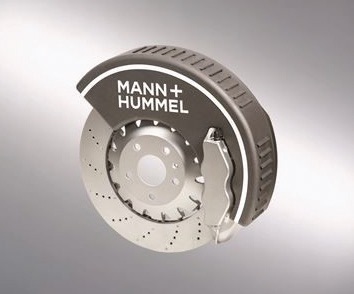 Figure 5. Mann+Hummel module. Curved vanes within the module induce vortices to be generated and is then expelled from the outer vanes. The dust is collected in filters within the module body. (Figure courtesy of Mann+Hummel.)
Figure 5. Mann+Hummel module. Curved vanes within the module induce vortices to be generated and is then expelled from the outer vanes. The dust is collected in filters within the module body. (Figure courtesy of Mann+Hummel.)
3.
CBP Module (U.S.). Designed by Brake Pad Waste Collection Systems Inc., it comprises a module that totally encapsulates the brake (
see Figure 6).
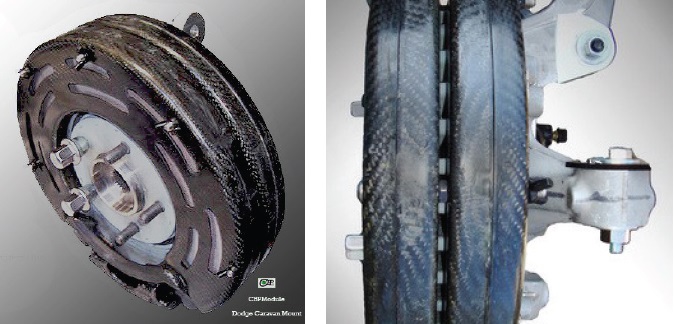 Figure 6. The CBP module. Clean air enters the module through the vents and disc surfaces, collects the dust within the module filters and expels the air through the side vents. (Figure courtesy of Clean Brake Performance.)
Figure 6. The CBP module. Clean air enters the module through the vents and disc surfaces, collects the dust within the module filters and expels the air through the side vents. (Figure courtesy of Clean Brake Performance.)
Recent advances of the CPB module include forced airflow through the module. The purpose of this approach is twofold—(1.) to create a turbulent flow of constant airflow to “agitate” the dust to ensure all particulates maintain an airborne characteristic for best collection and (2.) to enhance cooling of the brake. The air is evacuated from both the leading and trailing ends of the brake to ensure maximum dust collection. The test system is shown in Figure 7, which shows the two extraction pipes.
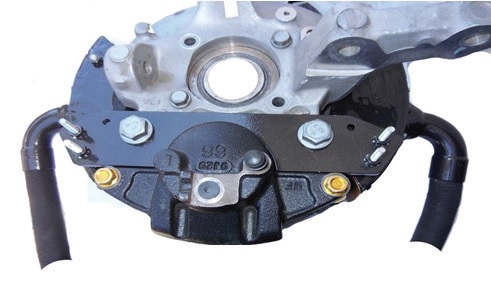 Figure 7. General upper view of forced airflow module from inboard side. (Figure courtesy of Clean Brake Performance.)
Figure 7. General upper view of forced airflow module from inboard side. (Figure courtesy of Clean Brake Performance.)
Figure 8 shows the module from a different perspective, which indicates the exposed rotor to allow for enhance cooling.
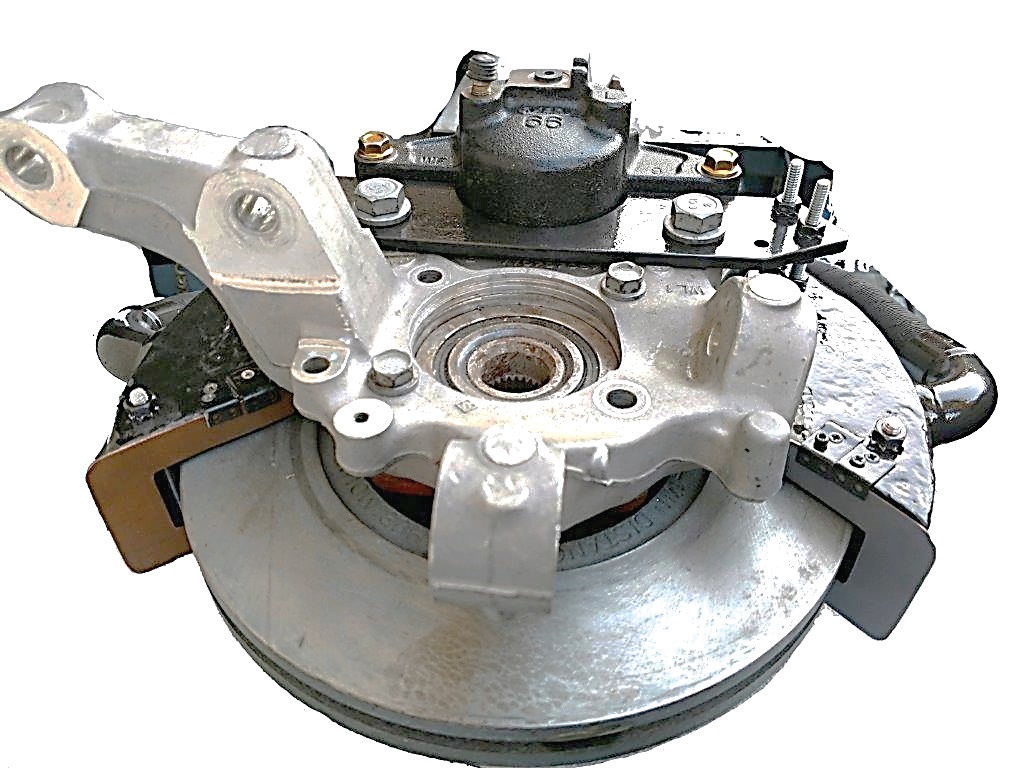 Figure 8. General lower view of forced airflow module from inboard side of brake. (Figure courtesy of Clean Brake Performance.)
Figure 8. General lower view of forced airflow module from inboard side of brake. (Figure courtesy of Clean Brake Performance.)
Figure 9 gives a clearer view of the hose extraction connections and a general view of the outboard side of the brake with module fitted. Figure 10 indicates the “filter pack” that is located at a convenient position within the vehicle for easy access, not the thermal coupler used to monitor the airflow temperature from the brake.
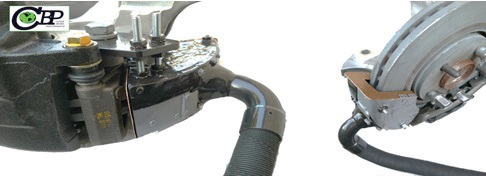 Figure 9. Hose connections to the leading and trailing ends of the brake. The image on the right indicates view of module from the outboard side. (Figure courtesy of Clean Brake Performance.)
Figure 9. Hose connections to the leading and trailing ends of the brake. The image on the right indicates view of module from the outboard side. (Figure courtesy of Clean Brake Performance.)
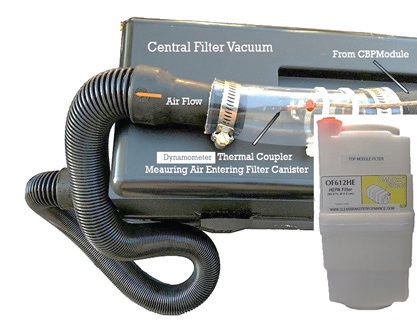 Figure 10. The centralized air extraction system and common filter. Note the thermal coupler that allows the airflow temperature to be constantly monitored. Such features may be used to advise the driver of any issues but most importantly to allow for debris analysis to be related back to brake usage. (Figure courtesy of Clean Brake Performance.)
Figure 10. The centralized air extraction system and common filter. Note the thermal coupler that allows the airflow temperature to be constantly monitored. Such features may be used to advise the driver of any issues but most importantly to allow for debris analysis to be related back to brake usage. (Figure courtesy of Clean Brake Performance.)
The challenges to capture these wear particles fall within the particle size. The finer the particles, the harder it is to capture them; hence no module to this date is capable of reporting more than 99% collection. The CBP module had reported a 92% collection based on dynamometer testing. Mann+Hummel reports an 80% collection. Tallano reports an average (dyno/vehicle) of 85% collection based on dynamometer and road testing.
It must be recognized that the finer the particles, the more harmful they may be to human health as the nano-sized particles can enter the blood stream and eventually the brain. The element magnetite and other elements similar to brake dust residue has been found in brain tissues dementia victims (
Ref.: PNAS, September 27, 2016, vol. 113, no. 39, pp. 10797-10801).
All these modules use HEPA filters to collect brake debris.
TLT: Compared to the exhaust-related emission due to the incomplete combustion in engines, how do you evaluate the non-exhaust-related particulate emission from brakes, tires and road surface?
Vakili: Emissions of particulars by engines represent 6.82 kilotons per year, the equivalent of particles released by cigarettes (6.11 kilotons/year) while particulars related to abrasion of brakes and tires reported 21.61 kilotons per year, according to Bosch.
TLT: In the case of capturing the brake dust, are these particulates recyclable?
Vakili: It is now proven that the brake dust may be captured. The captured dust is not recyclable if the terminology implies reusable. However, the saturated HEPA filters, filled with brake debris, may be burned via pyrolysis to generate energy. That, by itself, would become a line of business.